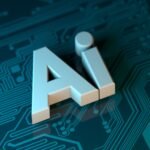Table of Contents
Introduction
The Internet of Things is no longer a futuristic concept—it’s here, expanding at an unstoppable pace and transforming the way we live, work, and interact with technology. From smart home devices to industrial automation, the Internet of Things has penetrated almost every aspect of our daily lives.
The rapid growth of the Internet of Things is driven by advancements in artificial intelligence (AI), cloud computing, and 5G technology. Businesses are leveraging the Internet of Things to optimize operations, while consumers are embracing smart devices for convenience and efficiency. But what does this growth mean for you? Let’s dive deep into the world of the Internet of Things, its impact, and what the future holds.
Understanding the Internet of Things
What is IoT?
The Internet of Things refers to the vast network of interconnected devices that collect, process, and share data over the Internet. These devices range from everyday household items like smart thermostats and fitness trackers to complex industrial machinery used in manufacturing.
How Does IoT Work?
Internet of Things devices are embedded with sensors, software, and communication hardware that enable them to interact with each other and central systems. They collect real-time data, analyze it, and take automated actions based on the information received.
Examples of IoT in Action
- Smart homes: Devices like Amazon Alexa, Google Nest, and Ring doorbells automate home functions.
- Healthcare: Wearable fitness trackers monitor heart rate, sleep patterns, and physical activity.
- Industrial IoT (IIoT): Factories use Internet of Things enabled machines to track production and predict maintenance needs.
- Agriculture: Internet of Things-powered sensors help farmers monitor soil moisture and optimize irrigation.
The Current State of IoT Growth
The Internet of Things is expanding at an unprecedented rate. According to recent studies, there are already over 15 billion connected Internet of Things devices worldwide, and this number is expected to exceed 30 billion by 2030.
Key Drivers of Internet of Things Growth
- 5G Technology: Faster and more reliable connectivity boosts Internet of Things adoption.
- AI and Big Data: AI-driven analytics enhance the efficiency of Internet of Things applications.
- Cloud Computing: Cloud infrastructure allows seamless data storage and processing.
- Increased Consumer Demand: Smart devices are becoming more accessible and affordable.
- Industry Adoption: Businesses are integrating the Internet of Things to streamline operations and improve productivity.
Key Industries Benefiting from the Internet of Things
Internet of Things in Healthcare
- Remote patient monitoring reduces hospital visits.
- Smart medical devices provide real-time health data.
- AI-powered diagnostics improve medical decision-making.
Internet of Things in Smart Homes and Cities
- Home automation enhances security and convenience.
- Smart energy management reduces electricity bills.
- IoT-based traffic management improves urban mobility.
Internet of Things in Manufacturing and Industry
- Predictive maintenance prevents machine failures.
- Automation enhances production efficiency.
- The Internet of Things optimizes logistics and supply chains.
Internet of Things in Agriculture
- Internet of Things sensors monitor crop health and soil moisture.
- Automated irrigation systems optimize water usage.
- Livestock tracking improves farm management.
How the Internet of Things is Changing Everyday Life
The Internet of Things is revolutionizing our daily experiences in ways we may not even realize. From waking up in a smart home to driving a connected car and working in an Internet of Things-powered office, technology is streamlining our routines.
Impact on Consumer Behavior
The Internet of Things is shifting the way we interact with products and services. Smart assistants like Amazon Alexa and Google Home allow users to control appliances with voice commands, while wearable devices track our fitness levels and health in real time. This increasing connectivity makes life more convenient but also raises concerns about over-reliance on technology.
Enhanced Convenience and Efficiency
- Smart home automation lets users control lighting, temperature, and security remotely.
- IoT-powered vehicles provide real-time traffic updates and self-driving capabilities.
- Wearable devices monitor heart rates, sleep cycles, and physical activity to improve health.
Potential Privacy and Security Concerns
With convenience comes risk—Internet of Things devices collect vast amounts of personal data, making them attractive targets for hackers. From smart TVs that listen to conversations to baby monitors that can be hacked, consumers must be cautious about data privacy and device security.
Security Challenges in Internet of Things
While the Internet of Things enhances efficiency and convenience, it also opens the door to cybersecurity threats. A lack of standardized security protocols makes connected devices vulnerable to cyberattacks, putting personal and business data at risk.
The Risk of Cyberattacks
- The hacking of IoT devices can expose sensitive data.
- DDoS attacks can disrupt entire networks using compromised devices.
- Ransomware attacks can take control of smart devices, demanding payments to restore access.
Privacy Concerns with Connected Devices
- Internet of Things devices constantly track and collect user data, sometimes without explicit consent.
- Companies use the Internet of Things-generated data for targeted ads, raising concerns about digital privacy.
- Surveillance through smart security cameras and doorbells spark ethical debates.
Strategies to Enhance IoT Security
- Use strong passwords and change default credentials.
- Enable two-factor authentication (2FA) for added protection.
- Regularly update software to patch security vulnerabilities.
- Invest in cybersecurity solutions that monitor Internet of Things threats.
The Future of IoT: What to Expect
The unstoppable growth of the Internet of Things is paving the way for new technological advancements, making everyday life more interconnected than ever before.
Predicted Growth Trends
- By 2030, over 30 billion IoT devices will be in use worldwide.
- AI-powered automation will enhance the intelligence of Internet of Things systems.
- IoT will play a crucial role in sustainable energy management and smart cities.
Emerging IoT Technologies
- Edge computing will reduce latency and improve real-time processing.
- Blockchain technology will enhance Internet of Things security and data integrity.
- 6G networks will further accelerate Internet of Things connectivity and capabilities.
The Role of AI and Machine Learning in IoT Evolution
- AI-driven Internet of Things will enable predictive analytics for better decision-making.
- Machine learning algorithms will optimize device performance and energy efficiency.
- AI-powered chatbots and virtual assistants will become even more sophisticated.
How Businesses Can Leverage IoT for Growth
Companies that embrace the Internet of Things are gaining a competitive edge by improving efficiency, reducing costs, and enhancing customer experiences.
IoT-Driven Business Transformation
Businesses are integrating the Internet of Things into their operations to improve productivity and optimize processes. For example, retailers use the Internet of Things for smart inventory management, while logistics companies rely on connected devices for real-time fleet tracking.
Cost Reduction and Operational Efficiency
- Automated supply chain management minimizes waste.
- Predictive maintenance reduces downtime and repair costs.
- Remote monitoring allows businesses to operate more efficiently.
Enhancing Customer Experience Through IoT
- Personalized recommendations based on consumer behavior data.
- Faster and more efficient customer support with Internet of Things-powered AI.
- Seamless shopping experiences through automated checkout systems.
What IoT Growth Means for Consumers
As the Internet of Things adoption rises, consumers will experience benefits and challenges.
Increased Smart Devices in Daily Life
From smart refrigerators that suggest grocery lists to Internet of Things-powered personal assistants, technology will become more intuitive and responsive to user needs.
More Personalized and Automated Experiences
Consumers will enjoy greater convenience, such as:
- Self-adjusting thermostats that adapt to personal preferences.
- Smart mirrors that offer skincare recommendations.
- Automated grocery deliveries based on usage patterns.
Balancing Convenience and Privacy
While the Internet of Things offers many advantages, users must remain aware of data privacy issues and take steps to protect their information.
Ethical and Legal Considerations in IoT
With billions of connected devices collecting data, legal and ethical concerns are emerging around Internet of Things technology.
Data Privacy Regulations
Governments are enforcing strict data protection laws like the General Data Protection Regulation (GDPR) in Europe and the California Consumer Privacy Act (CCPA) in the U.S. to regulate how companies handle personal data.
Ethical Concerns Surrounding IoT Surveillance
The rise of smart surveillance systems in homes, workplaces, and public spaces raises concerns about privacy violations and potential misuse of data.
Compliance Challenges for Businesses
Companies must navigate a complex landscape of IoT regulations and cybersecurity laws to ensure compliance while leveraging the technology for growth.
How to Prepare for the IoT Revolution
As the Internet of Things continues to evolve, individuals and businesses need to adapt to this digital transformation.
Adopting IoT in Personal and Professional Life
- Upgrade to smart home devices for convenience.
- Utilize IoT-based wearables for health and fitness tracking.
- Implement IoT solutions in business to stay competitive.
Learning IoT Skills for Career Growth
The demand for Internet of Things professionals is skyrocketing. Learning skills like Internet of Things development, cybersecurity, and AI integration can open up lucrative career opportunities.
Making Informed Choices About Connected Devices
- Research Internet of Things devices before purchasing to ensure security features.
- Regularly update firmware to protect against cyber threats.
- Be mindful of data-sharing policies before connecting devices.
Conclusion
The unstoppable growth of the Internet of Things is shaping the future of technology, bringing unprecedented convenience and efficiency to both businesses and consumers. However, as we embrace this digital revolution, we must also remain vigilant about privacy and security risks.
By staying informed, making smart choices, and adapting to new technologies, we can harness the power of the Internet of Things to improve our lives while mitigating potential threats. The future is connected—are you ready?









